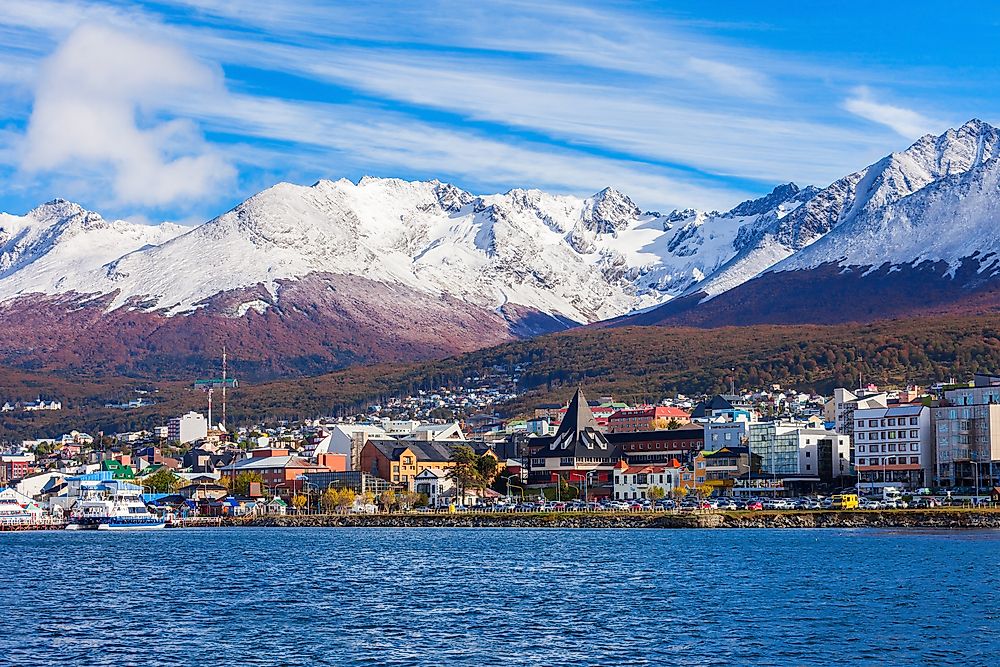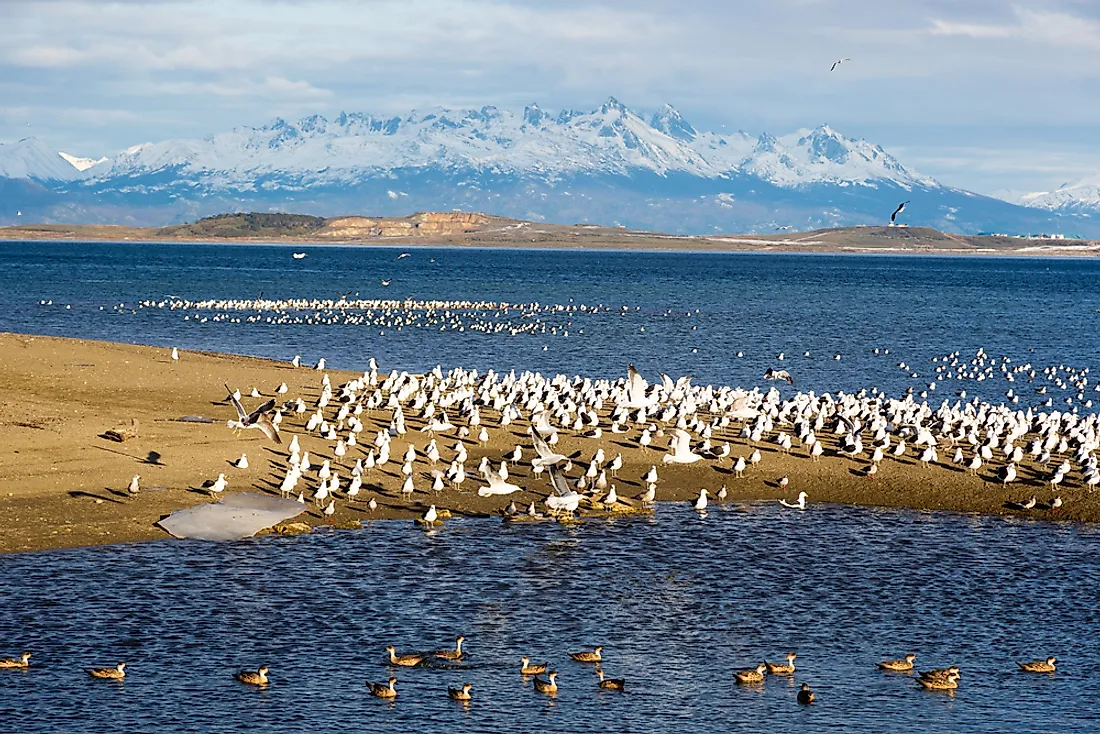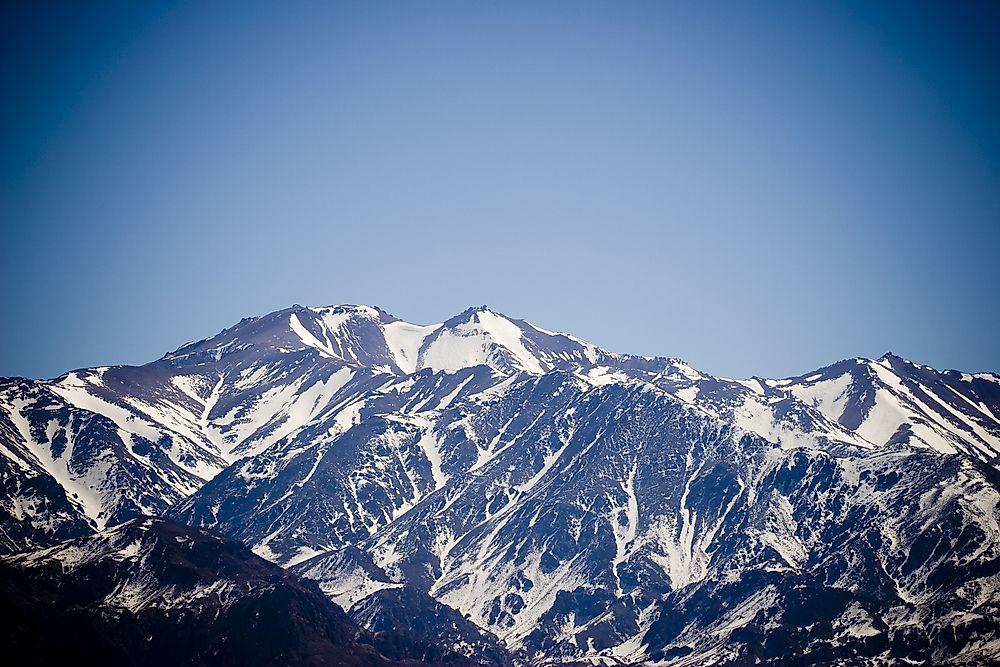The Most Extreme Points of Argentina

Argentina is a Latin speaking country located in the southern part of the South America continent. The country is the second largest in the region and the eighth largest in the world. It lies to the East of Chile, South of Bolivia and Paraguay, southwest of Brazil, west of South Atlantic Ocean and Uruguay, and the Drake Passage lies to its south.
The extreme points of the country are those that are furthest north, east, south, and west than any other points in the country, in addition to those of the highest and lowest elevations. Most of these points are undisputed and lie entirely within the borders of the country. However Argentina lays claims to the South Georgia and South Sandwich Islands which are under the administration of United Kingdom. The islands were claimed by James Cook for the United Kingdom in 1775 and were annexed in 1908. Argentine’s claim to the islands began in 1927, and culminated with the Falkland war of 1982 of which it lost to the British and the islands have since been administered by the United Kingdom. Argentina and Britain have also disputed over the Falkland Island of the United Kingdom has held sovereignty over since 1833. Various peace resolutions and talks have been tried over the course of the years but have failed to bear any fruits.
Argentine Antarctic, the area between the 25° West and 74° West meridians and the 60° South, is part of the Antarctica that Argentina lays claim to. This area overlaps with the Chilean and United Kingdom claims over Antarctica. However due to the Antarctic Treaty of 1961 of which Argentina is a signatory, these claims are not recognized by the international community.
6. Northernmost Point in Argentina
The northernmost point of mainland Argentina is at the point where the Grande de San Juan River meets the Mojinete River and joins it at 21º46'52 "S 66º13'36"W. This is in the province of Jujuy. The Grande de San Juan River is of the Plata watershed and its water source is the rains of Argentina, Uruguay, Bolivia, Paraguay, and Brazil. It finally drains off into the Atlantic Ocean.
5. Southernmost Point in Argentina

The undisputed southernmost point of Argentina is Islote Blanco (55°3′51″S 66°33′06″W). It lies on an area of 1 hectare and is located on the Province of Tierra del Fuego, in the department of Ushuaia. Ushuaia is sometimes considered the southernmost city of the world.
Punta Dungeness (52°24′S 68°26′W) is the southernmost point of mainland Argentina. Located in the Santa Cruz province, the headland is the border between Chile and Argentina, making it also the easternmost point of mainland Chile. It was named in December 17, 1766 by Samuel Willis a British navigator, after the English South Coast of Dungeness of which it looks like.
Thule Islands (59°27′S 27°18′W) would be the southernmost point if the Argentine claims on South Georgia and South Sandwich Islands are taken into account. Argentina set up the Corbeta Uruguay military base on the islands in November 1976 which was the first step that led to the Falklands war of 1982. The islands, also known as Morrell Islands after Benjamin Morrell, are uninhabited.
If the Antarctic Treaty is disregarded the southernmost point would be Argentine Antarctica in the South Pole (90°0′S 0°0′W).
4. Westernmost Point in Argentina
The westernmost point in Argentina is the Mount Cerro Agassiz (50°0′50″S 73°26′38″W) in the Chile-Argentine border. The mountain is part of the Andes Mountain Range and is located in the Santa Cruz Province, in the Patagonia region. Its highest elevation is 3,180 metres above the sea level.
Should the Antarctic treaty be disregarded and the Argentine Antarctic taken into account, the meridian 74°W would be the westernmost point.
3. Easternmost Point in Argentina
The city of Bernado de Irigoyen (26°15′S 53°59′W), located in the province of Misiones is the easternmost point of Argentina. It lies on the border with the Brazilian states of Catarina and Parana, and was named after the politician Bernado de Irigoyen. It is an important tourist hub and was formerly known by the name Barracon.
Montagu Islands (58°25′S 26°23′W), located in the South Sandwich Islands, would be the easternmost point if the Argentinian claims to the South George and South Sandwich Islands were taken into consideration. British explorer, James Cook, first sighted the Montagu islands in 1775 and named them after the then Lord of the British Admiralty, John Montagu. The Islands are uninhabited with more than 90% of its surface on ice. The active volcano, Mount Belinda is located on the islands.
2. Highest Point in Argentina

At 6,960.8 m above sea level, Mount Aconcagua (32°39′12.35″S 70°00′39.9″W) is the highest point of Argentina and the Americas. This makes it one of the Seven Summits of the world. The mountain is located in the province of Mendoza and is part of the Andes Mountain Range. Its name is believed to be from the either the Quechua, Mapudungun, or Aymara languages. The mountain and its surrounding is part of the Aconcagua Provincial Park which was established in I983. Mount Aconcagua is not an active volcano. Littered with a number of glaciers, its biggest being the Ventisquero Horcones Inferior, which is about 10 km in length. The mountain has a very easy ascent route that one can use to scale the mountain without the need to use ropes, pins, and axes. In 2013, nine year old Tyler Armstrong became the youngest person to ascend the mountain to its peak.
1. Lowest Point in Argentina
The lowest elevation in Argentina is the Laguna Del Carbon (49°35′S 68°21′W) at 105 meters below sea level. The salt lake is located in the Gran Bajo de San Julian basin in the Santa Cruz Province of Argentina. It is also the lowest point in the Americas and the Southern and Western Hemispheres. The lagoon ranks as the seventh biggest depression in the world and is 2 km wide and 5 km long.











